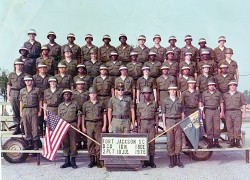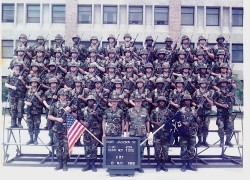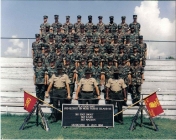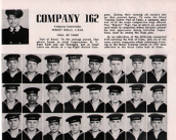The avionic communications equipment repairer performs or supervises field and sustainment level maintenance on aircraft communications equipment.
94L1O - Skill Level One




Uses Test, Measurement, and Diagnostic Equipment (TMDE), Test Program Sets (TPS), and Interactive Electronic Technical Manuals (IETM) to determine the cause and location of malfunctions, extent of faults, and category of maintenance required. Inspects equipment for faults and completeness. Tests equipment to determine operational condition. Troubleshoots to determine location and extent of equipment faults. Repairs equipment by adjusting, aligning, repairing, or replacing defective components. Tests repaired equipment to ensure compliance with technical specifications. Evacuates equipment and components to higher level repair activities based on the Maintenance Allocation Chart (MAC). Prepares appropriate maintenance forms and records. Logs maintenance in accordance with The Army Maintenance Management System (TAMMS). Maintains authorized spare parts, supply stock, tool lists, technical manuals, and instructional material. Perform preventive maintenance checks and services (PMCS) on TMDE, vehicles, and power generators.
94L2O - Skill Level Two

Performs duties shown in preceding skill level. Performs maintenance duties that are more complex and beyond the scope and experience of those encountered by the skill level one repairer. Provides technical assistance to both subordinates and supported users. Supervises the operation and proper use of TMDE. Schedules and performs user maintenance on TMDE, tools, and special test equipment. Performs final or quality control inspection of repaired equipment and maintenance documents. Provides shop supervisor with equipment repair status, priorities, and necessity for bench stock re-supply. Maintain maintenance facility technical library.
94L3O - Skill Level Three

Performs duties shown in preceding skill level. Performs maintenance duties that are more complex and beyond the scope and experience of those encountered by the skill level two repairer. Supervises and leads sections or squads of electronic repairers. Establishes workload, work schedules, and repair priorities. Assigns priority of work for job requests. Supervises final or quality control inspection of repaired equipment and maintenance documents. Supervise calibration and shop safety programs.
Physical Demands, Rating and Qualifications
(1) A physical demands rating of heavy.
(2) A physical profile of 222221.
(3) Normal color vision.
(4) Qualifying scores.
(a) A minimum score of 100 in aptitude area EL in Armed Services Vocational aptitude Battery (ASVAB) tests administered prior to 2 January 2002.
(b) A minimum score of 98 in aptitude area EL on ASVAB tests administered on and after 2 January 2002.
(5) A security eligibility of SECRET.
(a) Requirements for a SECRET eligibility is effective 1 January 2007 for Soldiers who entered service on and after 1 October 2005.
(b) Requirement for a SECRET eligibility is effective 1 November 2009 for Soldiers who entered service prior to 1 October 2005.
(6) Formal training by completion of the MOS 94L Course conducted under the auspices of the U.S. Army Ordnance Munitions and Electronic Maintenance School (USAOMEMS) mandatory; or waiver may be granted by Commander, U.S. Army Ordnance Center and Schools (USAOC&S), Aberdeen Proving Ground, MD 21005.
(7) Alcohol and drug abuse as defined below will disqualify any soldier or potential enlistee from this MOS. This disqualification will not be waived, even though the Soldier/potential enlistee satisfactorily completes the Army Alcohol or Drug Abuse Rehabilitation Program or a civilian equivalent, except as specified below:
(a) A medically diagnosed history of alcohol abuse as defined in the substance use disorder section of the Diagnostic and Statistical Manual III, 3rd Edition, 1980 (DSM III) is disqualifying. HRC may waive this disqualification after a Soldier/potential enlistee in this MOS successfully completes the Army Alcohol and Drug Abuse Prevention and Control Program (ADAPCP) Track I, II or III, or its civilian equivalent, based on the recommendations of the chain of command and the Cdr, USA Aeromedical Center. A Soldier/potential enlistee who completes any aspect of the ADAPCP program and is involved in an additional offense involving alcohol or alcohol abuse will be immediately reclassified or denied enlistment in this MOS as
a high risk.
(b) Except as provided in (e) below, a wrongful or improper use of narcotic or other controlled substance or dangerous drug as defined by 21 USC 801, et seq, is disqualifying.
(c) A positive result of urine test administered per AR 600-85 that leads to medical evaluation and a finding of "no diagnosis apparent, improper use" is disqualifying.
(d) Except as provided in (e) below, a documented instance of the use, sale, transfer, possession, or manufacture of any narcotic or other controlled substance or dangerous drug as defined by 21 USC 801, et seq, is disqualifying. A documented instance includes conviction by any courts martial or any civilian court. Convictions include juvenile adjudication, non judicial punishment under Article 15, UCMJ, or voluntary confession after proper rights warning according to Article 31(b), UCMJ.
(e) A Soldier or potential enlistee will not be disqualified for teenage civilian experimentation with marijuana or other cannabinoids disclosed in voluntary confessions of drug experimentation documented solely by information obtained from DD Form 1966, SF 88 or SF 93. (Experimentation is defined as one time use or casual use over a short period of time resulting from peer pressure.) The use disclosed must have occurred prior to the individual's 18th birthday, and prior to enlistment in any armed force.
c. Additional skill identifiers.
(1) P5--Master Fitness Trainer.
(2) 1J--Operational Electronic Warfare Operations (personnel only).
(3) 1K--Tactical Electronic Warfare Operations (personnel only).
(4) 1X--Green Belt in Lean Six Sigma (personnel only).
(5) 1Y--Black Belt in Lean Six Sigma (personnel only).
(6) 1Z--Master Black Belt in Lean Six Sigma (personnel only).
(7) 2A--Non-Lethal Weapons Trainer (personnel only).
(8) 2B--Air Assault (personnel only).
(9) 2S--Battle Staff Operations (skill level 3 and above).
(10) 4A--Reclassification Training.
(11) 5W--Jumpmaster (personnel only).
(12) 6Q—Additional Duty Safety NCO (Reserve Component personnel only).
(13) 6T--Military Auditor (Reserve Component personnel only).
(14) 8P--Competitive Parachutist (skill level 2-4 personnel only).
(2) A physical profile of 222221.
(3) Normal color vision.
(4) Qualifying scores.
(a) A minimum score of 100 in aptitude area EL in Armed Services Vocational aptitude Battery (ASVAB) tests administered prior to 2 January 2002.
(b) A minimum score of 98 in aptitude area EL on ASVAB tests administered on and after 2 January 2002.
(5) A security eligibility of SECRET.
(a) Requirements for a SECRET eligibility is effective 1 January 2007 for Soldiers who entered service on and after 1 October 2005.
(b) Requirement for a SECRET eligibility is effective 1 November 2009 for Soldiers who entered service prior to 1 October 2005.
(6) Formal training by completion of the MOS 94L Course conducted under the auspices of the U.S. Army Ordnance Munitions and Electronic Maintenance School (USAOMEMS) mandatory; or waiver may be granted by Commander, U.S. Army Ordnance Center and Schools (USAOC&S), Aberdeen Proving Ground, MD 21005.
(7) Alcohol and drug abuse as defined below will disqualify any soldier or potential enlistee from this MOS. This disqualification will not be waived, even though the Soldier/potential enlistee satisfactorily completes the Army Alcohol or Drug Abuse Rehabilitation Program or a civilian equivalent, except as specified below:
(a) A medically diagnosed history of alcohol abuse as defined in the substance use disorder section of the Diagnostic and Statistical Manual III, 3rd Edition, 1980 (DSM III) is disqualifying. HRC may waive this disqualification after a Soldier/potential enlistee in this MOS successfully completes the Army Alcohol and Drug Abuse Prevention and Control Program (ADAPCP) Track I, II or III, or its civilian equivalent, based on the recommendations of the chain of command and the Cdr, USA Aeromedical Center. A Soldier/potential enlistee who completes any aspect of the ADAPCP program and is involved in an additional offense involving alcohol or alcohol abuse will be immediately reclassified or denied enlistment in this MOS as
a high risk.
(b) Except as provided in (e) below, a wrongful or improper use of narcotic or other controlled substance or dangerous drug as defined by 21 USC 801, et seq, is disqualifying.
(c) A positive result of urine test administered per AR 600-85 that leads to medical evaluation and a finding of "no diagnosis apparent, improper use" is disqualifying.
(d) Except as provided in (e) below, a documented instance of the use, sale, transfer, possession, or manufacture of any narcotic or other controlled substance or dangerous drug as defined by 21 USC 801, et seq, is disqualifying. A documented instance includes conviction by any courts martial or any civilian court. Convictions include juvenile adjudication, non judicial punishment under Article 15, UCMJ, or voluntary confession after proper rights warning according to Article 31(b), UCMJ.
(e) A Soldier or potential enlistee will not be disqualified for teenage civilian experimentation with marijuana or other cannabinoids disclosed in voluntary confessions of drug experimentation documented solely by information obtained from DD Form 1966, SF 88 or SF 93. (Experimentation is defined as one time use or casual use over a short period of time resulting from peer pressure.) The use disclosed must have occurred prior to the individual's 18th birthday, and prior to enlistment in any armed force.
c. Additional skill identifiers.
(1) P5--Master Fitness Trainer.
(2) 1J--Operational Electronic Warfare Operations (personnel only).
(3) 1K--Tactical Electronic Warfare Operations (personnel only).
(4) 1X--Green Belt in Lean Six Sigma (personnel only).
(5) 1Y--Black Belt in Lean Six Sigma (personnel only).
(6) 1Z--Master Black Belt in Lean Six Sigma (personnel only).
(7) 2A--Non-Lethal Weapons Trainer (personnel only).
(8) 2B--Air Assault (personnel only).
(9) 2S--Battle Staff Operations (skill level 3 and above).
(10) 4A--Reclassification Training.
(11) 5W--Jumpmaster (personnel only).
(12) 6Q—Additional Duty Safety NCO (Reserve Component personnel only).
(13) 6T--Military Auditor (Reserve Component personnel only).
(14) 8P--Competitive Parachutist (skill level 2-4 personnel only).
School Information
School: 113 Location: CHAMBERLAIN AVE, FT GORDON, GA
Course Title: AVIONIC COMMUNICATIONS EQUIPMENT REPAIRER
Course: 102-94L10 Phase: Course Length: 19 Weeks 4.0 Days
Verifiable Prerequisites
PULHES 222221 Required
Normal Red/Green (RG) Perception YES Required
Physical Demand Rating HEAVY - LIFT OCCASIONAL 100 LB, FREQUENT 50 LB Required
Course Security Clearance G - INTERIM SECRET Required
Pay Grade E1 - ENLISTED Through E6 - ENLISTED Required
Service Component A - ACTIVE ARMY Required OR
R - ARMY RESERVES Required OR
G - NATIONAL GUARD Required
Prerequisite Courses
There are no Prerequisite Courses.
Text Prerequisites
Qualifying scores.
(a) A minimum score of 100 in aptitude area EL in Armed Services Vocational aptitude Battery (ASVAB) tests administered prior to 2 January 2002.
(b) A minimum score of 98 in aptitude area EL on ASVAB tests administered on and after 2 January 2002.
Alcohol and drug abuse as defined below will disqualify any soldier or potential enlistee from this MOS. This disqualification will not be waived, even though the soldier/potential enlistee satisfactorily completes the Army Alcohol or Drug Abuse Rehabilitation Program or a civilian equivalent, except as specified below:
(a) A medically diagnosed history of alcohol abuse as defined in the substance use disorder section of the Diagnostic and Statistical Manual III, 3rd Edition, 1980 (DSM III) is disqualifying. PERSCOM may waive this disqualification after a soldier/potential enlistee in this MOS successfully completes the Army Alcohol and Drug Abuse Prevention and Control Program (ADAPCP) Track I, II or III, or its civilian equivalent, based on the recommendations of the chain of command and the Cdr, USA Aeromedical Center. A soldier/potential enlistee who completes any aspect of the ADAPCP program and is involved in an additional offense involving alcohol or alcohol abuse will be immediately reclassified or denied enlistment in this MOS as a high risk.
(b) Except as provided in (e) below, a wrongful or improper use of narcotic or other controlled substance or dangerous drug as defined by 21 USC 801, et seq, is disqualifying.
(c) A positive result of urine test administered per AR 600-85 that leads to medical evaluation and a finding of "no diagnosis apparent, improper use" is disqualifying.
(d) Except as provided in (e) below, a documented instance of the use, sale, transfer, possession, or manufacture of any narcotic or other controlled substance or dangerous drug as defined by 21 USC 801, et seq, is disqualifying. A documented instance includes conviction by any courts martial or any civilian court. Convictions include juvenile adjudication, non judicial punishment under Article 15, UCMJ, or voluntary confession after proper rights warning according to Article 31(b), UCMJ.
(e) A soldier or potential enlistee will not be disqualified for teenage civilian experimentation with marijuana or other cannabinoids disclosed in voluntary confessions of drug experimentation documented solely by information obtained from DD Form 1966, SF 88 or SF 93. (Experimentation is defined as one time use or casual use over a short period of time resulting from peer pressure.) The use disclosed must have occurred prior to the individuals 18th birthday, and prior to enlistment in any armed force.
Course Scope:
Perform aviation intermediate maintenance (AVIM) on avionic communications equipment; to include high frequency (HF), very high frequency (VHF), amplitude modulated (AM), frequency modulated (FM), ultra high frequency (UHF), aircraft intercommunications control systems (ICS), and radio sets with frequency hopping capabilities. Troubleshoot malfunctioning
equipment, using common and specialized handtools and test equipment.
Special Information:
An INTERIM SECRET clearance is required to attend this course. Soldiers may graduate with an INTERIM Secret clearance but will be given a provisional award of MOS 94L10. Final award of MOS is dependent upon receipt of a SECRET clearance.
Reserve Component Soldiers will hand carry their original 201 file or a complete copy of the file to the service school. If the 201 file is mailed, it must arrive one week prior to the couse start date. International Students are required to bring their dress uniform and optional physical fitness clothing, running shoes, and field uniforms.
Course Title: AVIONIC COMMUNICATIONS EQUIPMENT REPAIRER
Course: 102-94L10 Phase: Course Length: 19 Weeks 4.0 Days
Verifiable Prerequisites
PULHES 222221 Required
Normal Red/Green (RG) Perception YES Required
Physical Demand Rating HEAVY - LIFT OCCASIONAL 100 LB, FREQUENT 50 LB Required
Course Security Clearance G - INTERIM SECRET Required
Pay Grade E1 - ENLISTED Through E6 - ENLISTED Required
Service Component A - ACTIVE ARMY Required OR
R - ARMY RESERVES Required OR
G - NATIONAL GUARD Required
Prerequisite Courses
There are no Prerequisite Courses.
Text Prerequisites
Qualifying scores.
(a) A minimum score of 100 in aptitude area EL in Armed Services Vocational aptitude Battery (ASVAB) tests administered prior to 2 January 2002.
(b) A minimum score of 98 in aptitude area EL on ASVAB tests administered on and after 2 January 2002.
Alcohol and drug abuse as defined below will disqualify any soldier or potential enlistee from this MOS. This disqualification will not be waived, even though the soldier/potential enlistee satisfactorily completes the Army Alcohol or Drug Abuse Rehabilitation Program or a civilian equivalent, except as specified below:
(a) A medically diagnosed history of alcohol abuse as defined in the substance use disorder section of the Diagnostic and Statistical Manual III, 3rd Edition, 1980 (DSM III) is disqualifying. PERSCOM may waive this disqualification after a soldier/potential enlistee in this MOS successfully completes the Army Alcohol and Drug Abuse Prevention and Control Program (ADAPCP) Track I, II or III, or its civilian equivalent, based on the recommendations of the chain of command and the Cdr, USA Aeromedical Center. A soldier/potential enlistee who completes any aspect of the ADAPCP program and is involved in an additional offense involving alcohol or alcohol abuse will be immediately reclassified or denied enlistment in this MOS as a high risk.
(b) Except as provided in (e) below, a wrongful or improper use of narcotic or other controlled substance or dangerous drug as defined by 21 USC 801, et seq, is disqualifying.
(c) A positive result of urine test administered per AR 600-85 that leads to medical evaluation and a finding of "no diagnosis apparent, improper use" is disqualifying.
(d) Except as provided in (e) below, a documented instance of the use, sale, transfer, possession, or manufacture of any narcotic or other controlled substance or dangerous drug as defined by 21 USC 801, et seq, is disqualifying. A documented instance includes conviction by any courts martial or any civilian court. Convictions include juvenile adjudication, non judicial punishment under Article 15, UCMJ, or voluntary confession after proper rights warning according to Article 31(b), UCMJ.
(e) A soldier or potential enlistee will not be disqualified for teenage civilian experimentation with marijuana or other cannabinoids disclosed in voluntary confessions of drug experimentation documented solely by information obtained from DD Form 1966, SF 88 or SF 93. (Experimentation is defined as one time use or casual use over a short period of time resulting from peer pressure.) The use disclosed must have occurred prior to the individuals 18th birthday, and prior to enlistment in any armed force.
Course Scope:
Perform aviation intermediate maintenance (AVIM) on avionic communications equipment; to include high frequency (HF), very high frequency (VHF), amplitude modulated (AM), frequency modulated (FM), ultra high frequency (UHF), aircraft intercommunications control systems (ICS), and radio sets with frequency hopping capabilities. Troubleshoot malfunctioning
equipment, using common and specialized handtools and test equipment.
Special Information:
An INTERIM SECRET clearance is required to attend this course. Soldiers may graduate with an INTERIM Secret clearance but will be given a provisional award of MOS 94L10. Final award of MOS is dependent upon receipt of a SECRET clearance.
Reserve Component Soldiers will hand carry their original 201 file or a complete copy of the file to the service school. If the 201 file is mailed, it must arrive one week prior to the couse start date. International Students are required to bring their dress uniform and optional physical fitness clothing, running shoes, and field uniforms.




